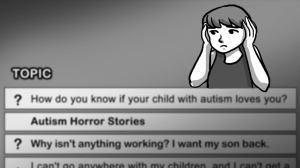Originally published on Huffington Post and republished here with the author’s permission.
In order to achieve success in the classroom with Black and Latinx students, the educator must understand the population that they teach, as well as consistently analyze if their teaching practices are effective.
If you do not understand the population of students you teach, your success in the classroom can be greatly minimized.
With all the recent debates on ways to reach the Black and Latinx student population, here is a list of twelve tips all educators of Black and Latinxchildren should know. Some of the tips can apply to all students.
1. Check Stereotypes
Check any stereotypes you might have at the door.
Limiting views can result in limiting expectations of the Black and Latinx student. Limiting expectations can result in limited performance.
If you believe in the stereotype of the loud mouth Latina, or the bad boy thug, you’re doomed.
Do not make false assumptions about your student population, especially if they are contrived from negative stereotypes.
If you view the urban school environments as a “mad” house, then guess how you directly or indirectly view your students.
2. Connect with Parents
Establish a positive connection with parents from the first day of class.
A phone call to report good news is as equally vital to the success of your student as informing parents when children are struggling.
3. Include Cultural Images
Due to the overexposure to white identities in media, Black and Latinx students need to see images of themselves where they are not portrayed as inferior or subordinate to white culture.
Hang positive images in your classroom that reinforce the beauty of Black and Latinx culture – and not images that consists solely of music and sports icons.
Explore images from the Harlem Renaissance, or photos of great Black and Latinx folks.
If you have students from a variety of backgrounds in your class, select images that speak to each student, not merely images that reinforce white privilege.
4. Respect Identity
Learn the name of each student.
When you’ve memorized the name of each student, you are saying to your student, “I am interested in who you are.”
5. Inspire Motivation
Negative putdowns create uncooperative shutdowns. Be a motivator.
Tell your Black and Latinx students what they can do, not merely what they can’t do. Work on areas of improvement without using antagonistic language. Offer sincere praise and positive faith.
Having students state positive affirmations as a class creates a team-winning mentality and establishes community. Expressing positive faith in your Black and Latinx student can make them improve in leaps and bounds academically.
6. Show Enthusiasm
Show your enthusiasm towards the content you teach. The love for your area of expertise should transmit to each and very student.
National education surveys conducted with Black and Latinx students suggest enthusiastic educators have far greater success in the classroom.
Could you fathom listening to one that does not particularly show interest in what they teach? A bore!
7. Expose Students to After School Programs
Expose students to your knowledge of after school programs that might be offered in your school or district.
Not only does the student get to acquire a new skill, in areas riddled with high incidents of crime, research suggests students involved in extracurricular activities are less prone to fall prey to mischievous activity.
8. Express the Value of Education and Real Life
Express the value of education. Explain the varying levels of educational possibilities one can attain.
Do not assume your students know how many high school credits they need to graduate. Do not assume your students knows what a bachelors, masters, or doctorate program consists of.
Sharing your personal journey with Black and Latinx children helps them to see you as a human, and not just some robot with formatted lesson plans.
Share how education connects to real life.
Be bold. Invite students to discover the works of those great thinkers in your academic area.
9. Forgive
It’s important for the Black and Latinx student to know that after any challenges or misunderstanding, you do not harbor any animosity or use grades as a weapon to “get even.”
Remember you are in the process of educating children, not mini adults.
10. Model Appropriate Behavior and Dress for Success
You are a role model first and foremost. Show through your actions what’s considered appropriate conduct. Dress for success each day you enter the classroom.
Would you trust one to educate you with sloppy or unprofessional attire?
Students also need to see how they will one day be required to dress as professional adults.
11. Slow Down with Suspensions
Black and Latinx students need viable options other than suspension.
Suspended students most likely engage in watching television or playing video games while home on suspension.
Most students view suspension as a way to take a break from school.
Neither contribute to the academic growth of any child.
12. Choose an Effective Classroom Format
If your Black and Latinx student can’t sit still for long periods of time or listen to lecture format, do not send a request for special education paperwork.
Black and Latinx students, at times, might struggle with lecture format in grades
six through eleven.
Allow students to get up and stretch in between instruction, or rely on small group instruction.
Also, remember, every student does not learn instruction in the same manner, so you must vary instructional methods.
[do_widget id=’text-101′]
Quassan Castro is a news and entertainment writer. Quassan is also an educator. Chat with Quassan on Twitter @Quassan.
Search our 3000+ articles!
Read our articles about:
Our online racial justice training
Used by hundreds of universities, non-profits, and businesses.
Click to learn more





















